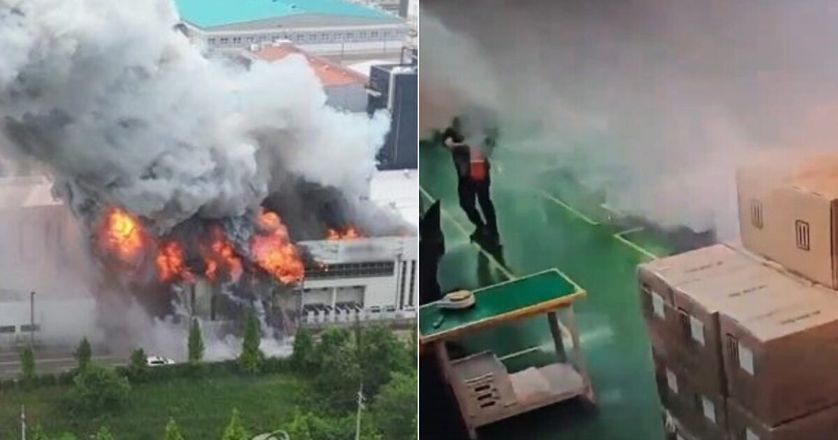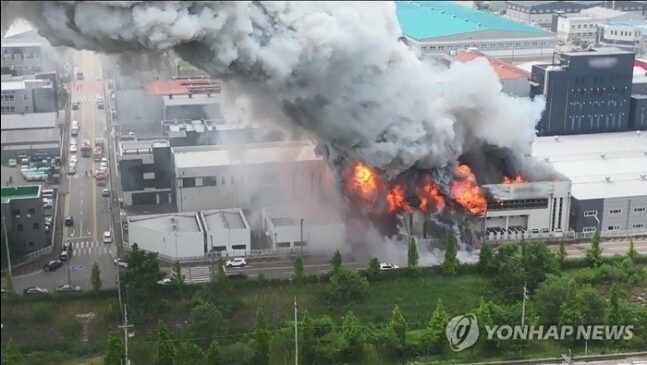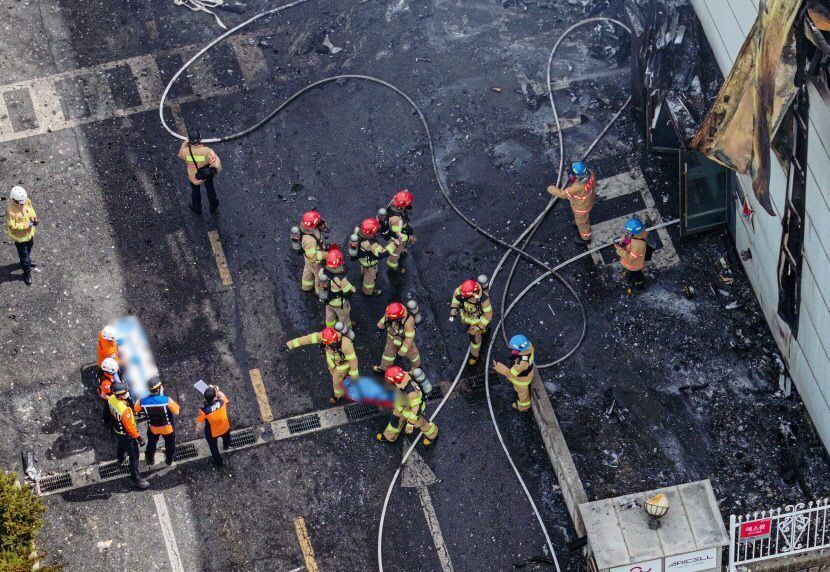I started a conversation about work safety.

On June 24, a massive fire broke out at a battery factory in Hwaseong, South Korea. Despite the rapid response from the second level, where more than 145 firefighters and 50 fire engines were sent to fight the fire, more than 20 bodies were recovered from the scene, and it is assumed that they included 23 workers who were reported missing earlier.

This tragic incident shook the entire country after the initial reports. But recently released CCTV footage of the fire has sparked deep discussions about the safety of workers at the factory and whether this tragedy could have been avoided.

Security footage from the factory showed the fire started with a small explosion from a pile of battery packs stacked at knee height. There was no clear indication whether any external factor caused the explosion. However, one employee noticed the smoke and quickly retreated. Two male employees began removing the smoking pile of batteries, presumably to prevent the fire from spreading to other batteries. However, the employees on the floor were generally unaware of the seriousness of the situation when they resumed work.
A few seconds after the smoke started, a large flame erupted from the stack of batteries, causing a secondary explosion. The two employees who were handling the package panicked and retreated. Five seconds later, a second explosion occurred, prompting another employee to grab a fire extinguisher. Unfortunately, this powder extinguisher seemed ill-suited to a lithium flame, and did nothing to contain the flames.
As the employee continued to use the fire extinguisher, another explosion occurred, at which point workers began evacuating. Soon after, 5-6 successive explosions occurred with bright flashes as the screen filled with thick smoke. About 4 hours and 40 minutes later, 21 employees working on that floor were found dead in the corner room opposite the initial ignition point.
The footage left netizens questioning whether the workers had adequate training to handle such emergencies. Many felt that if they had been aware of the proper safety measures to take, the number of deaths could have been avoided altogether.

- “The company should have provided regular training for such situations.”
- “I saw on the news yesterday that many of the workers were temporary employees who had not worked there for a long time and were not familiar with the layout of the building, which contributed to the tragedy. The exit was located near the fire, and there was no exit on the other side, so they were trapped and could not escape.
- “Oh no, they didn’t have enough safety training…”
- “This is so frustrating…”
- “Sigh… If only they had been evacuated immediately.”
The incident has put Aricell under the microscope, as most of its workforce consists of foreign workers with F-4 Korean overseas visas and H-2 work and visit visas, despite not meeting the criteria for hiring these workers. Aricell CEO Park Soon-kwan denied accusations of illegally hiring foreign workers, noting that most of them were hired through the human resources agency as subcontracted day laborers. He also claimed that the agency was the one providing instructions to the workers, in an attempt to evade the responsibility of providing workers with safety-related job training.
The percentage of foreign workers in Aricel shows that it is a company that relies heavily on foreign workers. There is high suspicion that this is a case of illegal recruitment of foreign workers with the aim of obtaining cheap labor without proper safety measures.
— Professor Kim Sung-hee, Korea University Graduate School of Labor Studies
Share this post

“Lifelong food lover. Avid beeraholic. Zombie fanatic. Passionate travel practitioner.”
